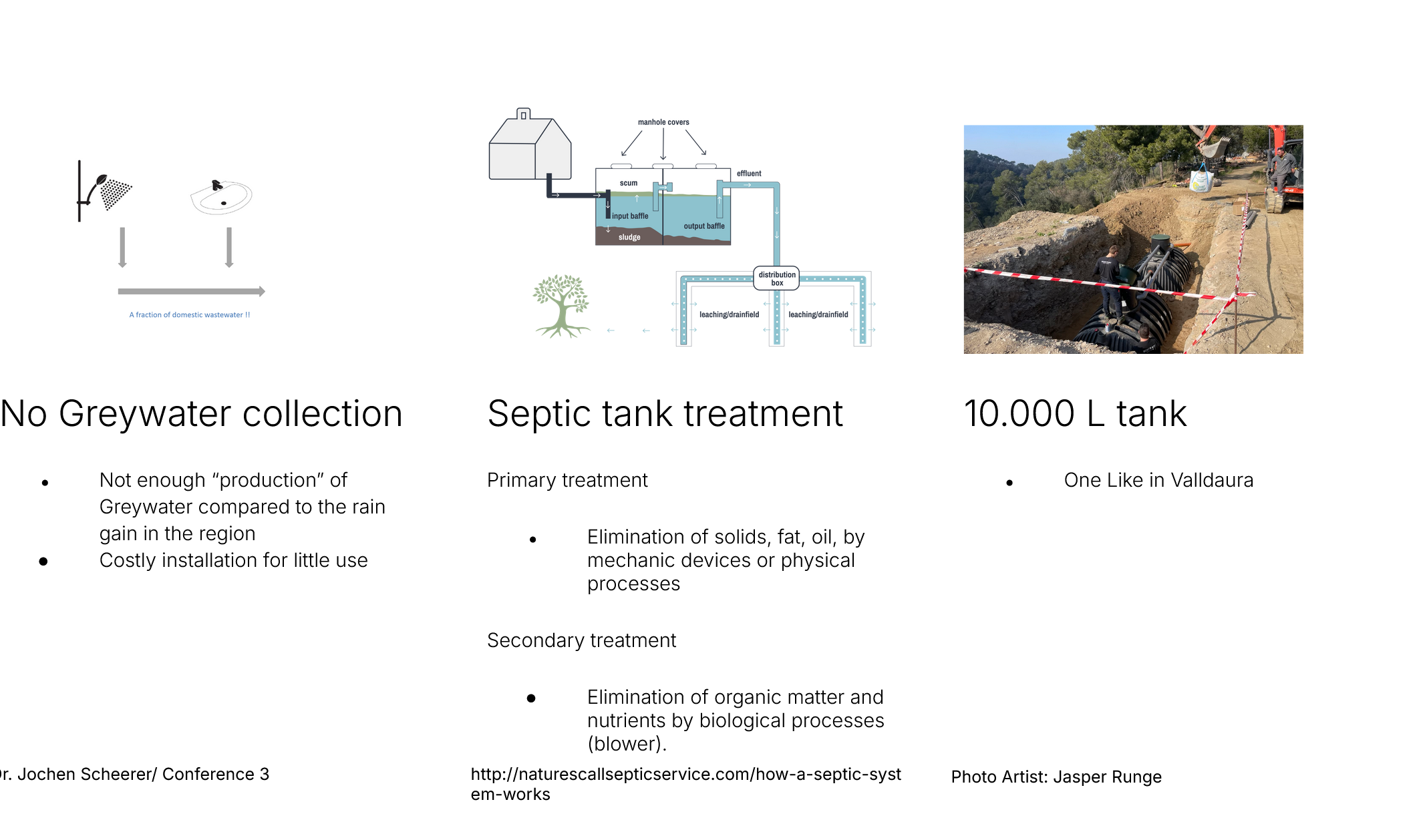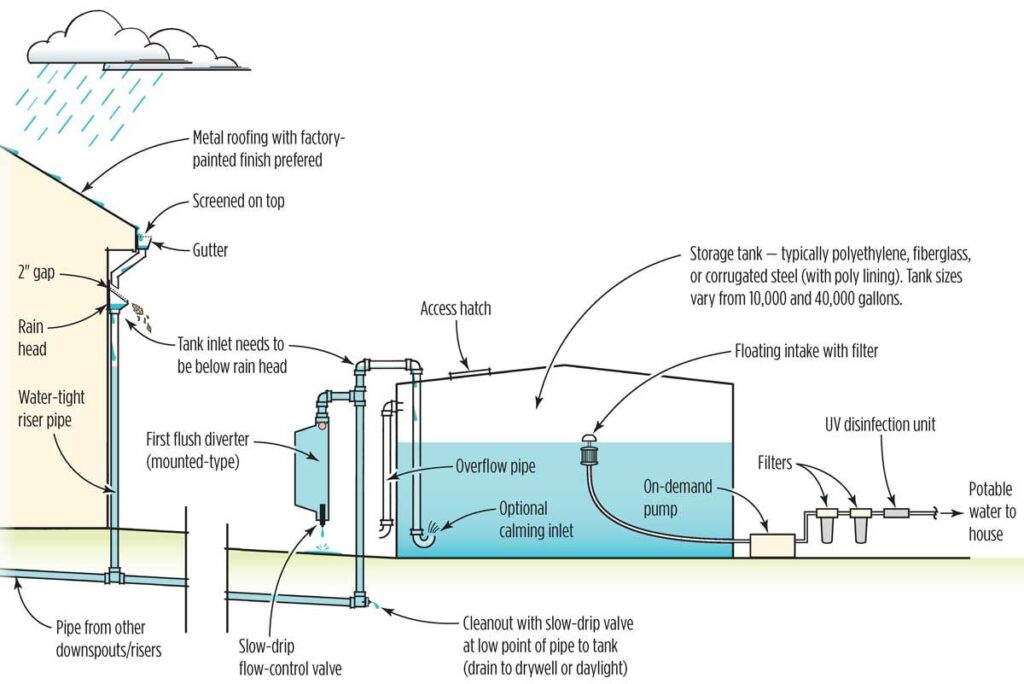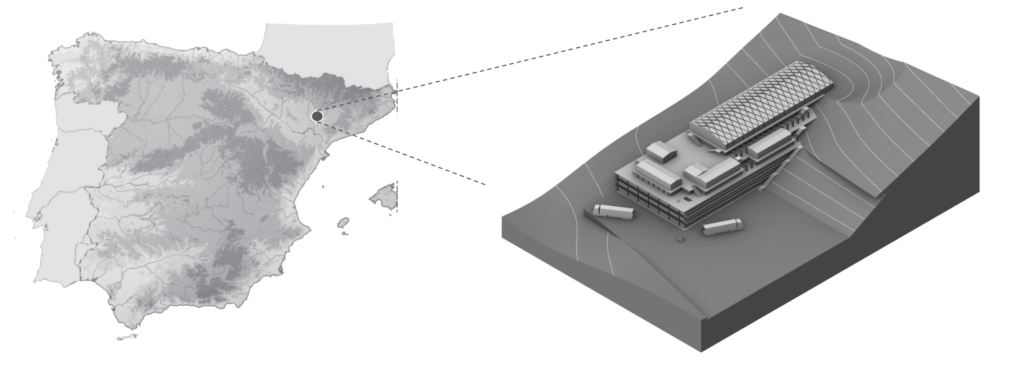
The boutique CLT Factory in Solsona consists of a large 40.000sqm factory volume and a tarraced roof that accommodates offices, amenities, green spaces and the covered living area. Within the context of Catalonia that has been grappling with severe drought conditions over the past few years, leading to significant water scarcity issues, a special focus has to be on the water management. In February 2024, the region declared a drought emergency as water reserves fell below 16% of their capacity, prompting stringent water usage restrictions. ( waterdiplomat.org )
To address this ongoing crisis, the Catalan government has initiated several measures:
- Infrastructure Improvements: In October 2024, plans were announced to activate new wells and enhance existing water infrastructure within the Ter-Llobregat system, which supplies water to approximately 80% of Catalonia’s population. These efforts aim to increase water availability by 31 hectometers by the end of 2025.( elpais.com)
- Long-Term Strategies: Catalonia has committed to a €2.3 billion investment plan extending to 2040, focusing on reducing dependence on rainfall. This includes constructing new desalination plants, improving wastewater management, and repairing leaky infrastructure to ensure a more sustainable water supply.( euronews.com)
Despite these initiatives, challenges persist. As of October 2024, the region’s reservoirs were at 27.3% capacity, with some areas experiencing even more critical levels. For instance, the Riudecanyes reservoir in Priorat was nearly dry at 1.6% capacity.( elpais.com )
While Catalonia has not declared a state of emergency specifically for 2025, the region will continue to face significant water scarcity challenges that should be addressed in new constructions.
As of our calculations for 25 people working and living in the factory the consumption of water can be as little as a total of 967,716 Liters annually. Thanks to modern machines the CLT production consumes almost no water.
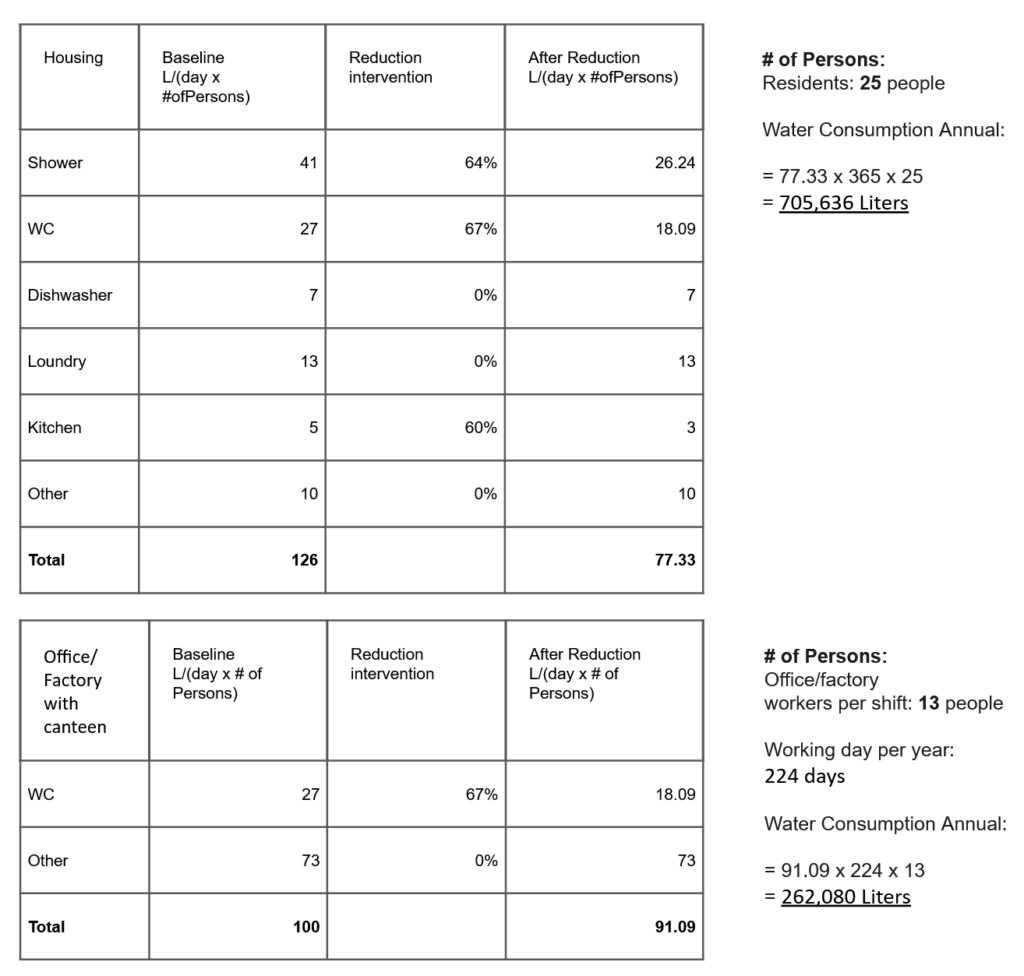
Simple interventions can have a big impact on the consumption of water per person, but the biggest of them all is the change of habits like taking shorter showers or using compost toilets.
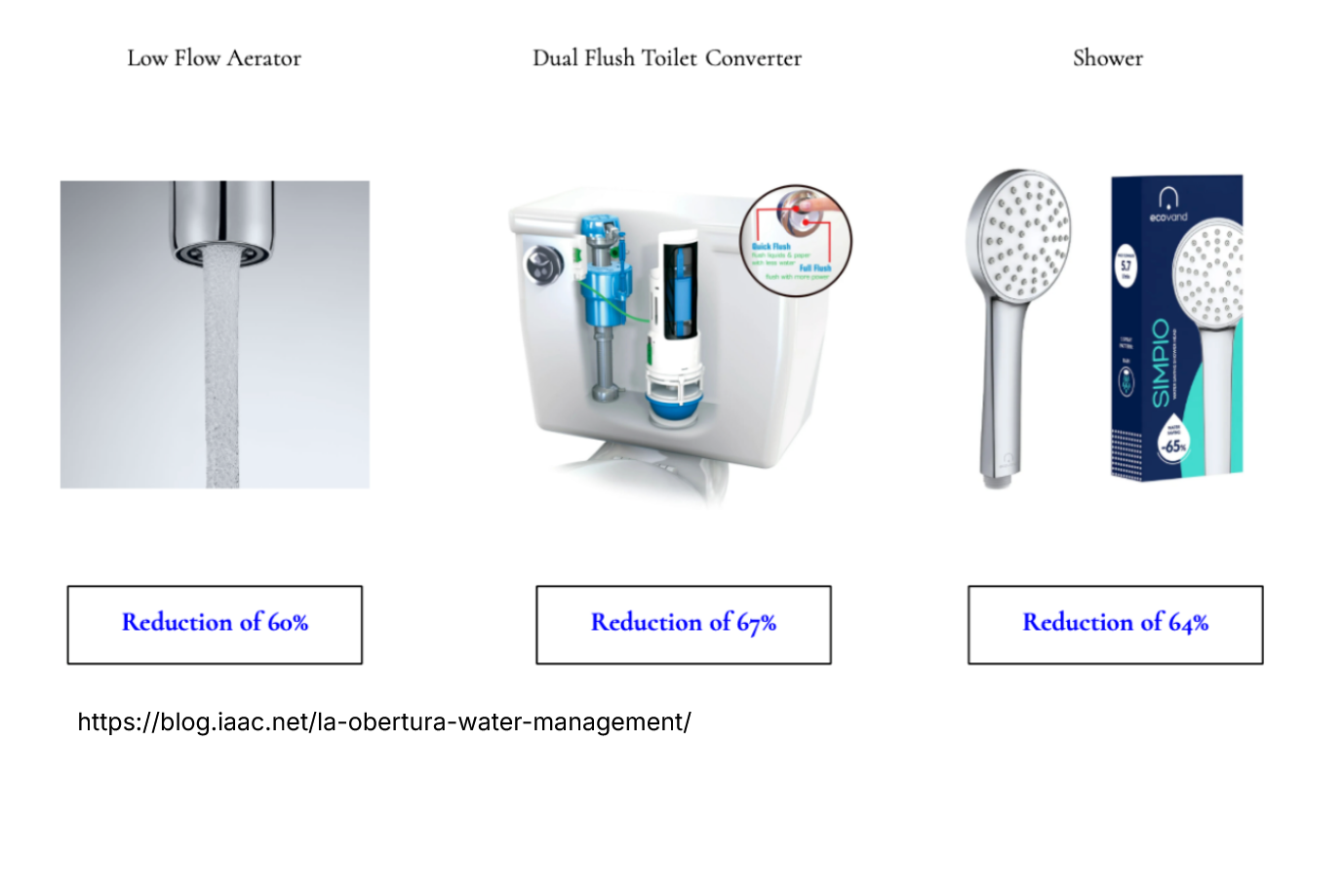
Even though Catalunya faces severe droughts the rainfall from the past years will be enough to cover the water needs for the whole year if the surplus of rainy months in the summer is stored for the dryer months in winter. The water can be collected on the hard surfaces of the greenhouse and the offices, whereas the water collected by the green roof will only be used as irrigation for itself.
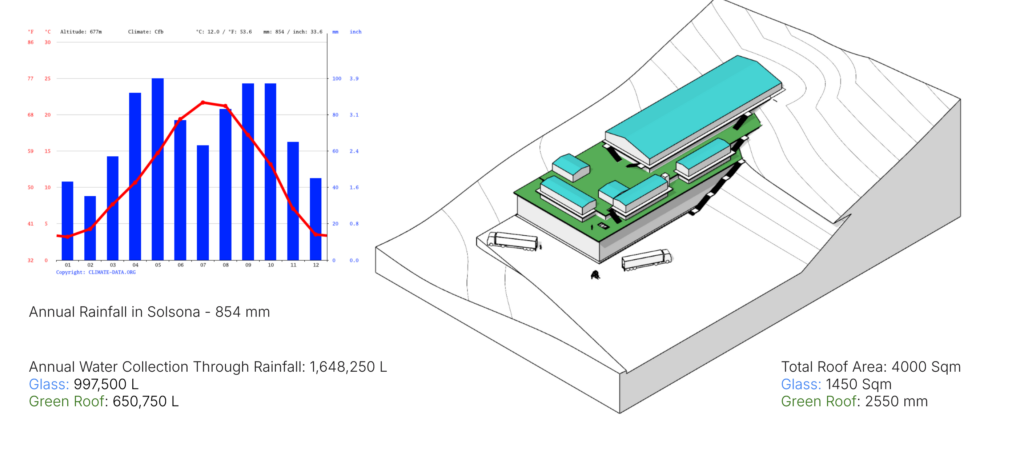
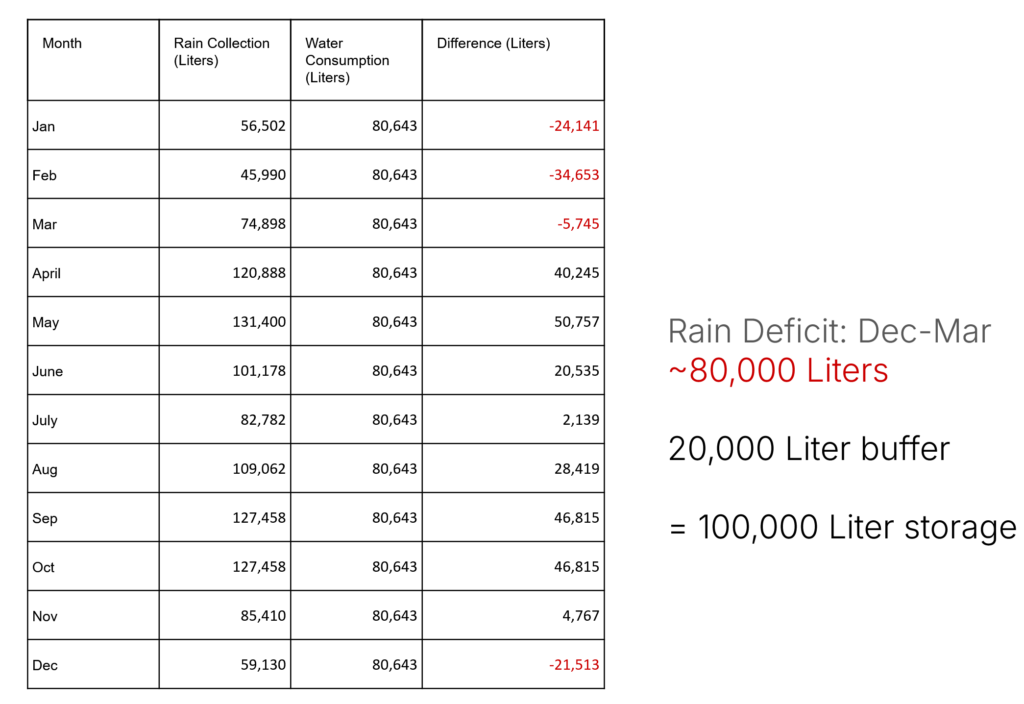
With the big water tank and a filtering and purification system in place we don’t even need to recycle our greywater. A greywater treatment would be a costly investment without an efficient reason, since the treatment of the comparatively little production of greywater would be energy consuming and maintenance intensive. The CLT factory tries to be as efficient and independent as possible, thus not every possible water management would make sense.
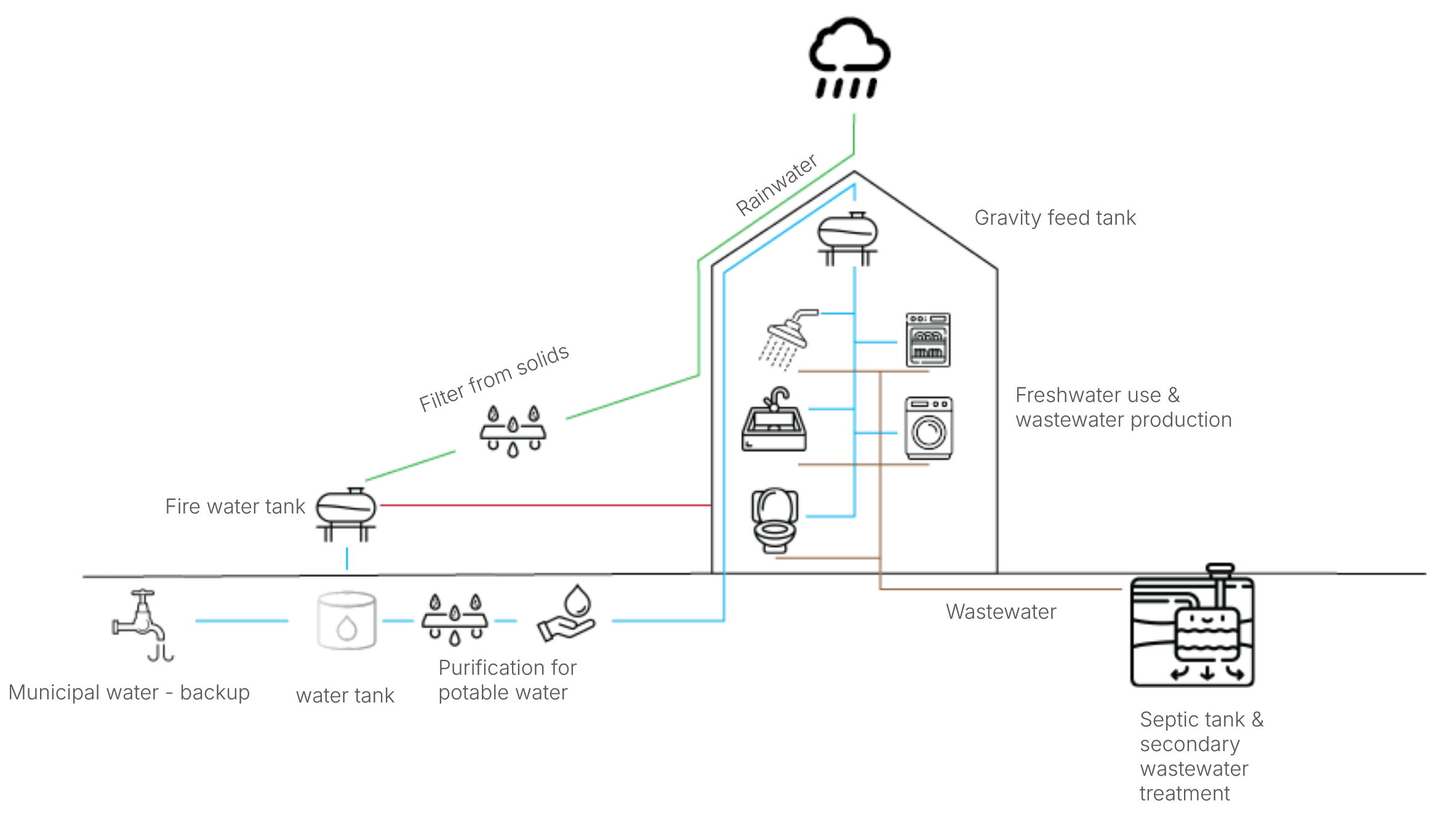
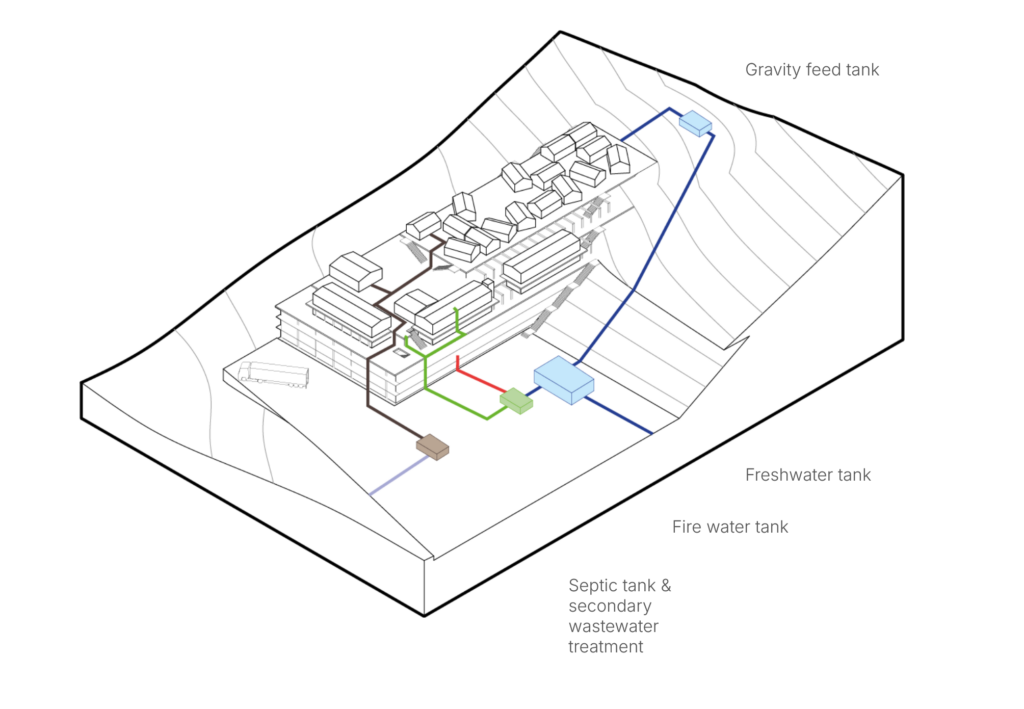
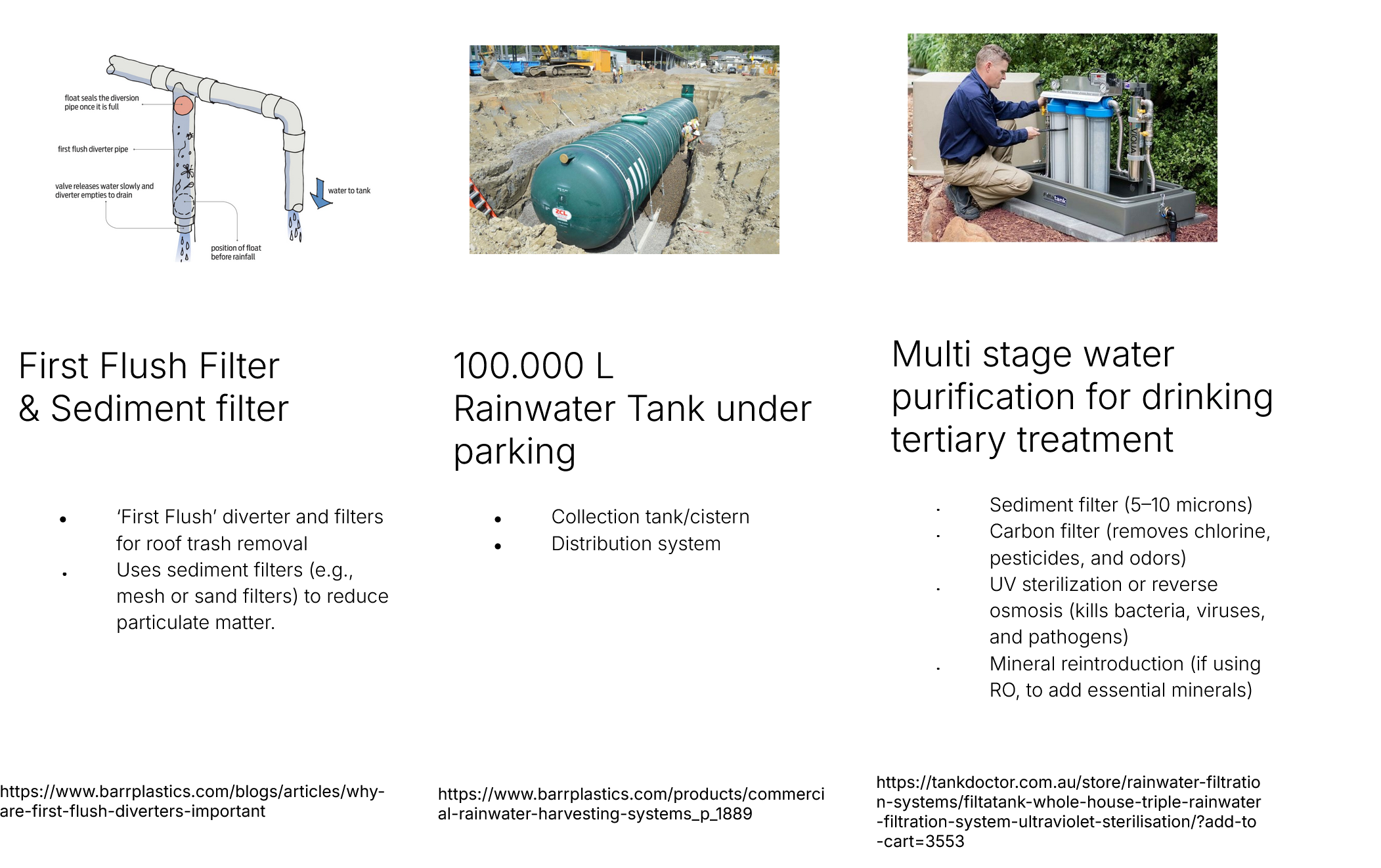
The wastewater treatment will happen underground in a septic tank for the primary treatment, followed by the secondary treatment before it is released into the ground. Due to limited space this option is the most suitable and reliable.
